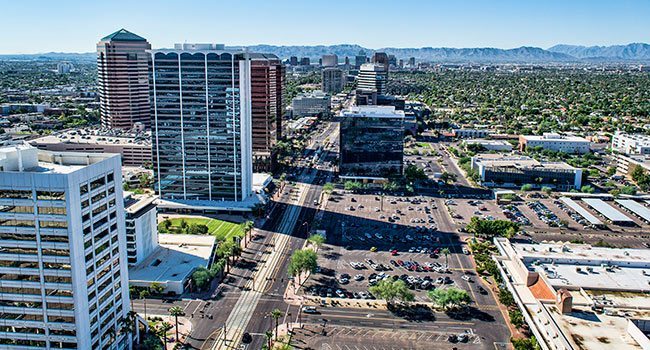Avison Young has released its Fall 2017 North America and Europe Commercial Real Estate Investment Review.
Vendors of commercial real estate assets continue to attract a diverse group of eager buyers deploying an abundant supply of capital across asset classes and geographical boundaries. In some markets, scarcity of product has resulted in peak pricing, leading some investors to look further afield in a world of shrinking returns – and to take on more risk.
Through the first half of 2017, investment sales volume in the Phoenix Metro Area declined 16% to $4.3 billion from $5.1 billion at mid-year 2016. Industrial and office sales volumes increased 34% and 22%, respectively, while the retail (-50%) and multi-family (-24%) sectors registered declines.
Multi-family deliveries slowed in the first half of 2017 to 16 properties compared with 60 during the same period in 2016; nevertheless, developments under construction rose to 79 from 28, and more than 60 projects are planned for delivery in 2018-19. Development is primarily focused around downtown Phoenix and in Tempe. Multi-family investment sales declined to $2.1 billion in first-half 2017 from $2.8 billion in first-half 2016. However, multi-family remained the largest sector in terms of transaction volume. The Phoenix area’s average cap rate dropped to 5.9% at mid-year 2017 from 6.6% one year earlier. Even with this decrease, returns in Phoenix are favorable to investors diversifying from northeastern and western coastal markets.
Office volume increased 22% in first-half 2017 with more than $1.2 billion in sales after a slow start in 2016. The average office cap rate dropped to 7.2% at mid-year 2017 from 8% one year earlier due to fewer value-add opportunities on the market. However, the office sector remains a viable investment option thanks to stable vacancy rates, established rent-growth trends and strong employment projections.
Industrial vacancy is at historic lows and rent growth has been steady, projecting a strong long-term outlook. With industrial cap rates continuing to rise since mid-year 2015, investors are looking to purchase cash-flow properties before prices escalate.
Retail investment continued to slow in first-half 2017 due to the lack of quality available properties. However, digital disruption in the retail industry has resulted in landlords and investors creatively repurposing properties by revising the tenant mix to include for-profit universities, theaters, medical space, entertainment districts, restaurant anchors and e-commerce distribution centers.




